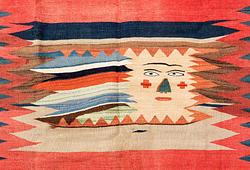Anatole Zverev
ANATOLE ZVEREV, pastel crayon on paper, signed and dated 62.
Portrait. 58 x 40 cm.
Ei tutkittu ilman kehyksiä.
Alkuperä - Provenienssi
The collection of Hans Björkegren, journalist, translator and writer.
Muut tiedot
The artist, Anatoly Zverev, was a leading figure in the Soviet underground movement in the post-Stalin era. Born in 1931, he spent all of his life in Moscow, where, from the late 1950s, he became a prominent figure in the Soviet Nonconformist movement. During a time when Socialist Realism was the only truly acceptable form of art, Zverev's expressive, unconventional style was anathema to the state. No exhibitions of his work were held until shortly before his death in 1986. Continually harassed by Soviet authorities, Zverev lived a hand-to-mouth existence and relied on a close circle of friends to support him. In his early days as a painter he earned money to buy paint by playing checkers in local parks. Nonetheless, he enjoyed great success and popularity both in the Soviet underground and abroad.
.
Many of the subjects of these paintings are foreigners, including figures of authority such as former UN leader Dag Hammarskjold and Agnes Jarring, wife of former Swedish Ambassador Gunnar Jarring. The art collector George Costakis, was one of the first to discover Zverev's work. Costakis worked at the time at the Canadian Embassy in Moscow, and would introduce arriving foreign dignitaries to local artists. Zverev would be smuggled through security in the backseat of a car to meet the subjects of his portraits. Costakis wanted to help Zverev earn a living, and this was his way of doing so." These foreign relationships explain both Zverev's unpopularity with the Soviet authorities and his popularity abroad — exhibitions of his works have been held in the United States, Germany, Greece, and Japan. Costakis was the one who introduced Björkegren to Anatale Zverev, Ernst Neizvestny and their contemporaries.































